Auburn’s Sugar Bowl Aesthetic History
For the first time in twelve years, the Auburn Tigers will be heading back to the Super Dome in New Orleans. This will mark the sixth time the Tigers have played in the Sugar Bowl, tied for the most bowl appearances with the Gator Bowl. Auburn’s Sugar Bowl history is nothing short of a deep and entertaining rabbit hole.
Auburn first appeared in this game back in 1972 against Oklahoma, this year’s opponent. The Tigers would come to New Orleans ranked #5 nationally, and face the #3 ranked Oklahoma Sooners. The game didn’t fare to well for Auburn, having lost 40-22. Auburn would sport their navy blue jerseys, and Oklahoma in all white with the crimson helmets.
The next time Auburn would travel back to New Orleans would be 1984, as the #3 Tigers would face #9 Michigan. This time around, Auburn would pull out the win, defeating the Wolverines 9-7. The 1984 rendition of the Sugar Bowl would be the game’s 50th anniversary, so there was a special logo to commemorate the occasion. Both teams would wear the 50th anniversary logo on the jerseys. Since Auburn was declared the 1983 SEC Champions, the Tigers would wear a special Champions logo opposite the Sugar Bowl Patch. The best part about these patches is that they were worn in place of (if not on top of) the TV numbers on the shoulders, rather than on the chest like in today’s bowl games.
The Tigers also would sport their (amazing) orange facemasks during the game, as well as the 36 memorial decal. The decal was in honor of fullback Greg Pratt, who passed away in preseason workouts after collapsing following running tests.
Auburn would soon become a normal visitor to New Orleans, playing back-to-back games in 1988 and 1989. The former of the two would be one of the most memorable in terms of after effects, as #6 Auburn would kick a last second field goal to tie #4 Syracuse at 16-all. Syracuse fans were so upset with Pat Dye for deciding to tie the game rather than attempt to win outright, that they sent 2,000 ties to Dye’s office. Dye, the head coach and athletic director at the time, ended up autographing the ties and selling them for $100 a piece. The sales from the ties would end up raising $30,000 for Auburn’s general scholarship fund.
The Tigers would once again wear the Sugar Bowl patch on one shoulder, with a 1987 SEC Champions patch on the opposite side.
The 1989 edition of the Sugar Bowl pit the Tigers from Auburn against the Florida State Seminoles. Auburn, then ranked #7 in the country, would fall 13-7 to the #4 team. Auburn would once again wear their blue jerseys for the New Orleans bowl game. and continue to wear the bowl patches on the shoulders. This time, though, there was no SEC Champions patch, even though the Tigers would share the title with LSU.
It would be another 16 years before the Tigers would make a return trip to south Louisiana. This time, things were different. Auburn was looking to be traveling to Miami for the Orange Bowl and a chance at the BCS Championship, but instead got sent to the Sugar Bowl. Many Auburn fans are still bitter to this day for being snubbed, especially since the championship game wasn’t anything exciting.
Auburn would once again enter the Super Dome wearing their blue jerseys, making all five Sugar Bowl appearances a blue-on-white uniform game for Auburn. The #3 Tigers would face a maroon-white-maroon clad #9 Virginia Tech team, only to win 16-13. For the first time in the New Orleans bowl, the Tigers would wear the bowl patch on the now-traditional chest placement.
As we turn our attention to the 2017 edition of the Sugar Bowl, Auburn looks towards preparing to old Sugar Bowl foe, Oklahoma. The only two times these teams have met have been in this very game. Thankfully, that will be the only familiarity in terms of the entire game. The original matchup was played at Tulane Stadium, and this year’s game of course will be at the Super Dome. Also, as previously mentioned, Auburn wore blue and Oklahoma wore white back in 1972. That too will change this year, as it’s been revealed that Auburn will be wearing the white tops. With that, we’ll be seeing Oklahoma in crimson, but the only question is which one. A few years back, the Sooners broke out two alternate uniforms – a crimson and creme version. I personally wouldn’t expect to see OU wear these, but it’s still a possibility.
Aside from the uniform history, the more interesting parts – to me at least – are the field designs. Documenting nearly all of the Auburn bowl game field designs is one of the more entertaining projects for me, and they’re all always so different.
The first game back in 1972 had one of the most uninspired designs in all of Auburn post-season field designs. I originally thought it was just a product of the time, with many bowls not going all-out on their fields, but that’s simply not the case. I also thought it was because of the bowl being played at a often-used facility like the Tulane Stadium, but photos of other Sugar Bowls at the stadium prove that wrong as well.
The return trip to New Orleans, the first Sugar Bowl in the Super Dome for Auburn, saw a much better field design. The 50th anniversary logo was placed at midfield, with Auburn and Michigan having their own colors in the endzones, 20 yard lines, and the odd letter-marks on the 30 yard lines.
The tie game versus Syracuse came with a very non-college looking field design. On one side of the field, the Sugar Bowl committee had the bowl name placed in the endzone. Alright, that works well. But on the other side, the hometown New Orleans Saints left their wordmark and helmets. That;s the odd part, but it isn’t unheard of, for Auburn at least, since the Tigers played on a similar design for the 1990 Peach Bowl. The two participating teams did at least get their names painted on the field, but at the top and bottom of the 50 yard line – another odd design choice.
The 1989 game brought back the team-specific field design, but it was still a little uninspired compared to the previous designs. The game also recycled the same logo from the previous year, with the year on the trophy being the only thing to change. Though it is funny to see “FSU” spread out across the endzone to match the width of Auburn’s lettering.
Many years later, as the Tigers made it back to New Orleans in 2005, the field was pretty standard for modern Sugar Bowls. Auburn and Virginia Tech had their school names in the endzone, with the old BCS logo flanking on either side. The Nokia Sugar Bowl logo was naturally placed at midfield, but with the Nokia logo being placed outside the numbers on the 20 yard lines.
Sadly enough, this year’s field design probably won’t be much different than the 2005 version. Taking a look at last year’s design, it was fairly consistent with that 2005 design, with just switching out the bowl logo and the sponsor logos. I’m hoping it’ll be a little different, as the more bland designs aren’t as fun to mock-up.
With Auburn wearing white in the upcoming Sugar Bowl, it’s not only the first time the Tigers will wear white in this game, but it will be the fourth straight bowl game in white. The last time they wore the blue jerseys? The 2011 Chick-fil-a Bowl against Virginia. If there’s any consolation to Auburn wearing white again, it’s that the white jerseys are catching up to the blue tops in terms of overall bowl games worn. The blue jerseys have been worn in 22 of Auburn’s 40 bowl games, with the all-white uniforms being worn 14 times. But that’s only 36 games, what about the other four? Well, the first four bowl games Auburn played in (1936-37 and 1953-1954 [granted I haven’t confirmed the 1954 Gator Bowl, but I’m confident in this]) featured the Tigers in their then-normal orange uniforms. Auburn’s bowl game records by uniform color are below:
Even with Auburn slated to wear white for the fourth straight game, it doesn’t come close to the streak of blue-clad games. Starting with the 1988 Sugar Bowl and ending with the 1997 Peach Bowl against Indiana, Auburn wore blue for seven straight bowl games. Prior to the current white streak, the Tigers also went four straight games in blue, book ended by the 2007 and 2011 Chick-fil-a Bowls, versus Clemson and Virginia, respectively.
Check out the history of Auburn’s bowl game uniforms here.
A collection of recent uniform match-ups can be viewed here.
You can view all the documented bowl game field designs in one place.
Enjoy uniforms and want to learn more? Be sure to follow the Auburn Uniform Database, like the AUD Facebook page, and follow me on Twitter for even more uniform news. Also, you can support this site by purchasing AUD t-shirts and other merchandise.

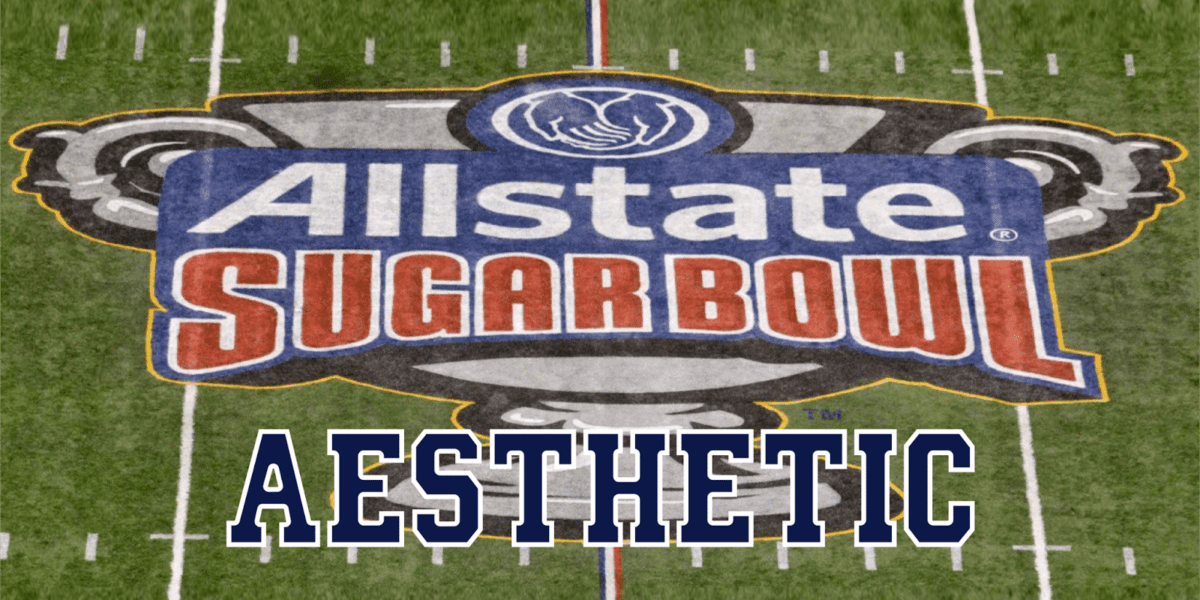

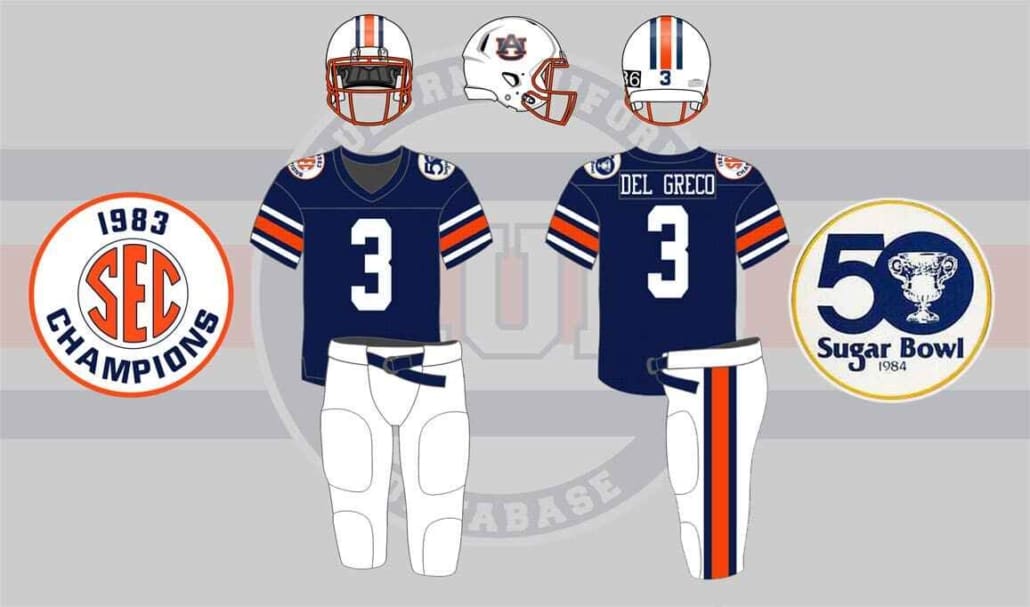
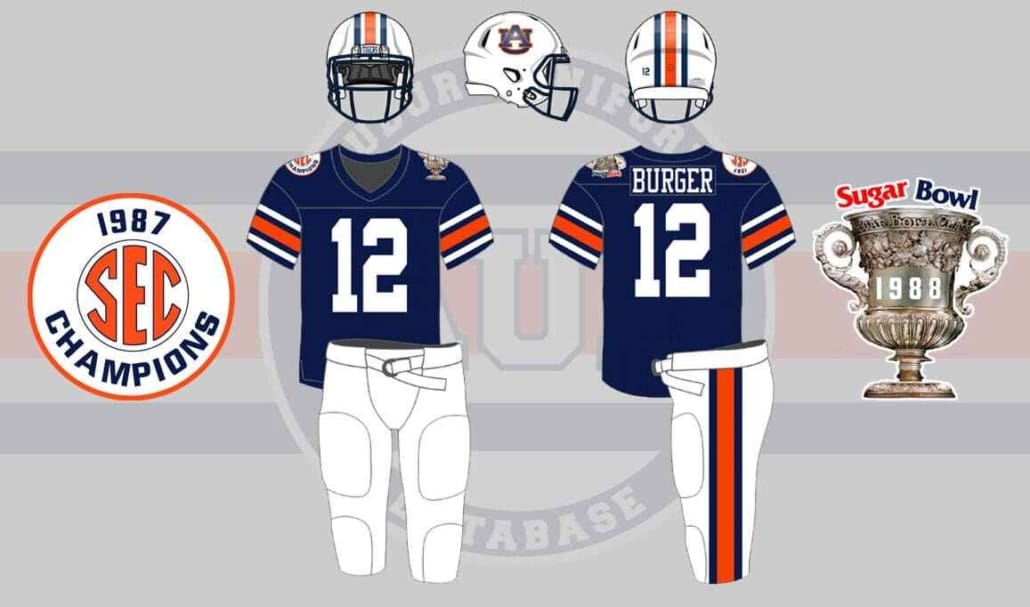
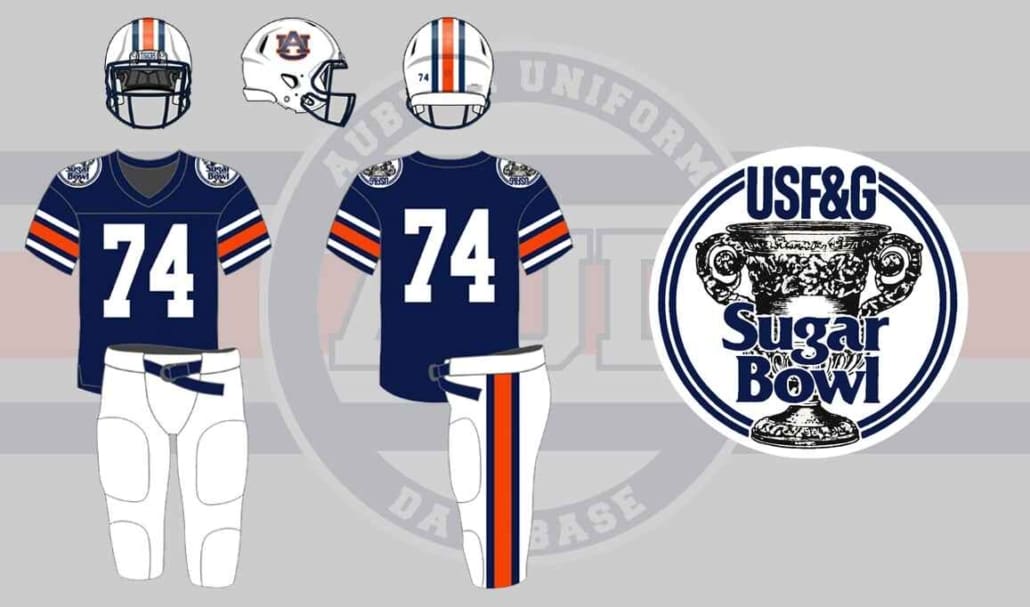
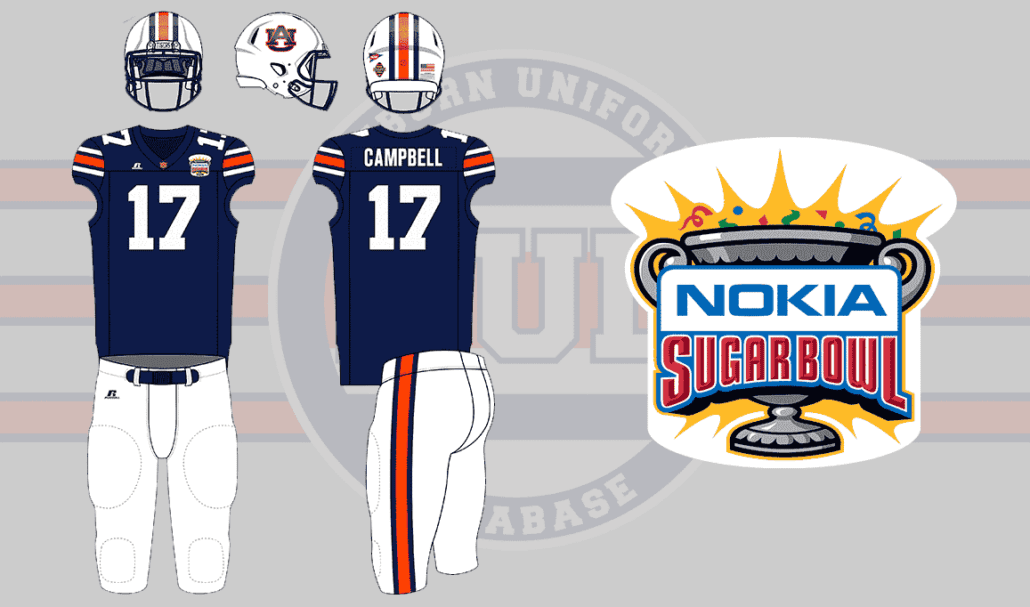

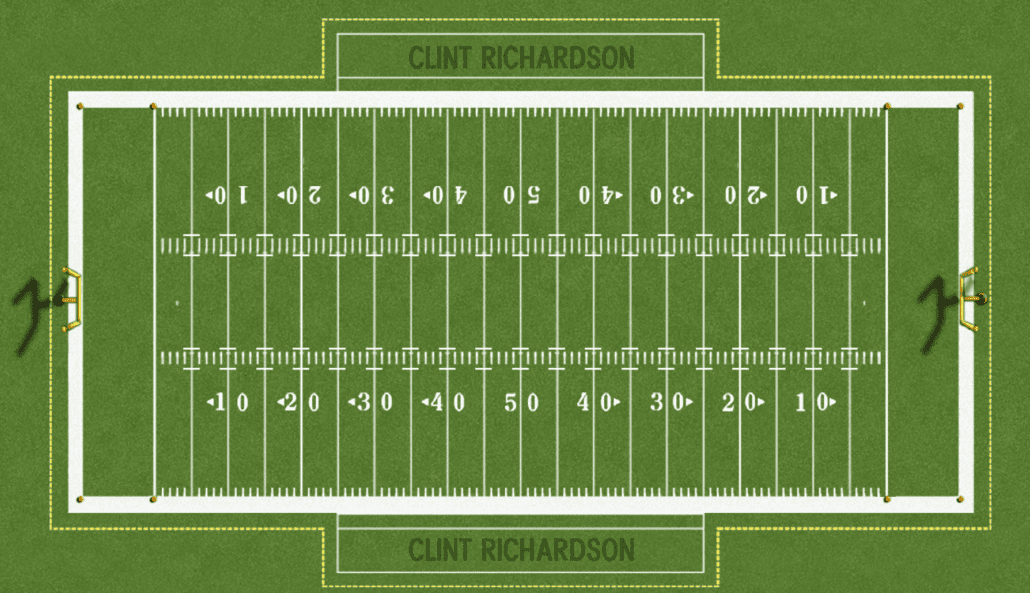
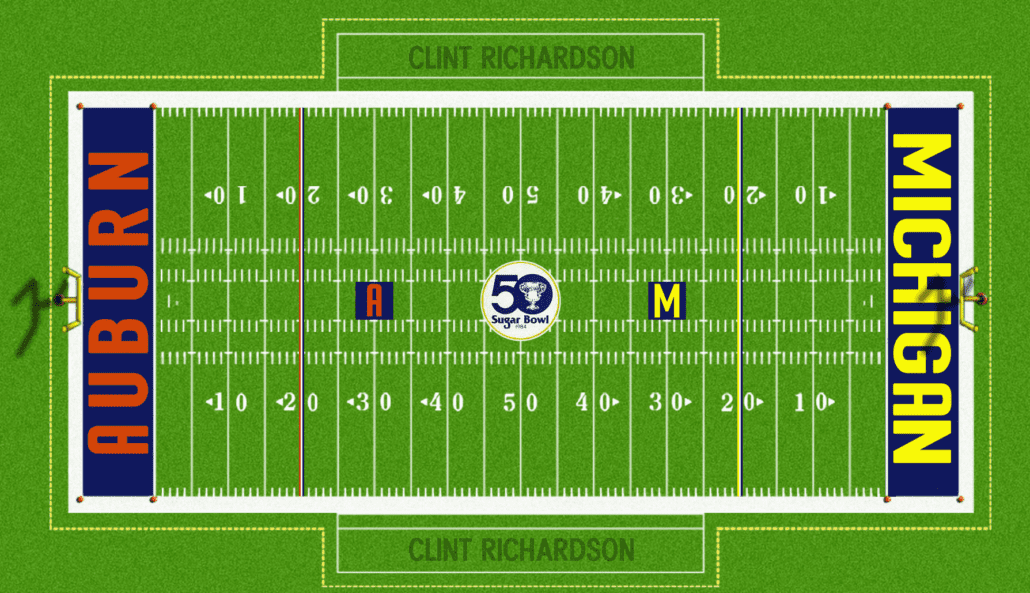
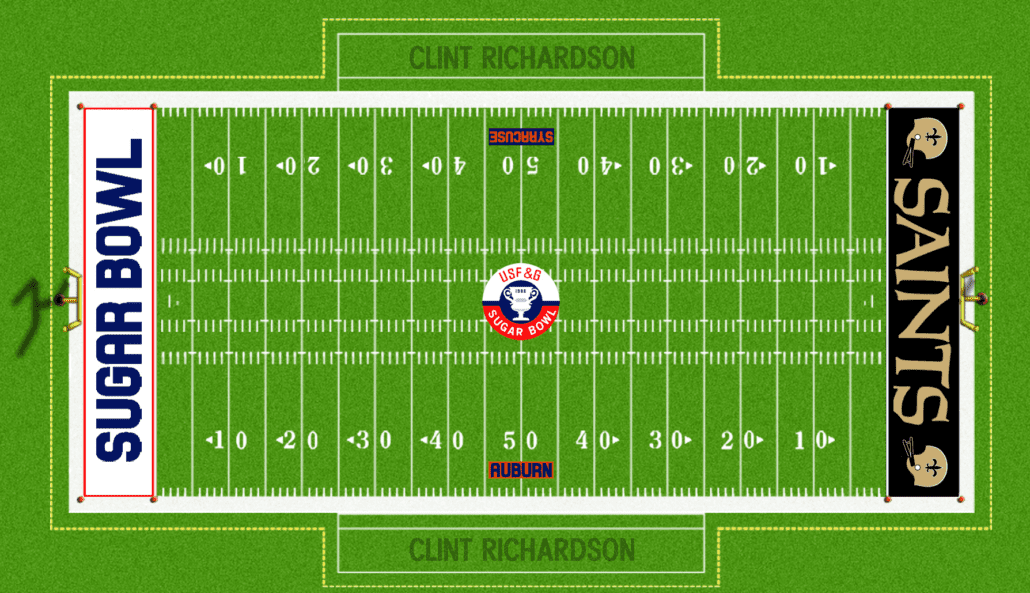
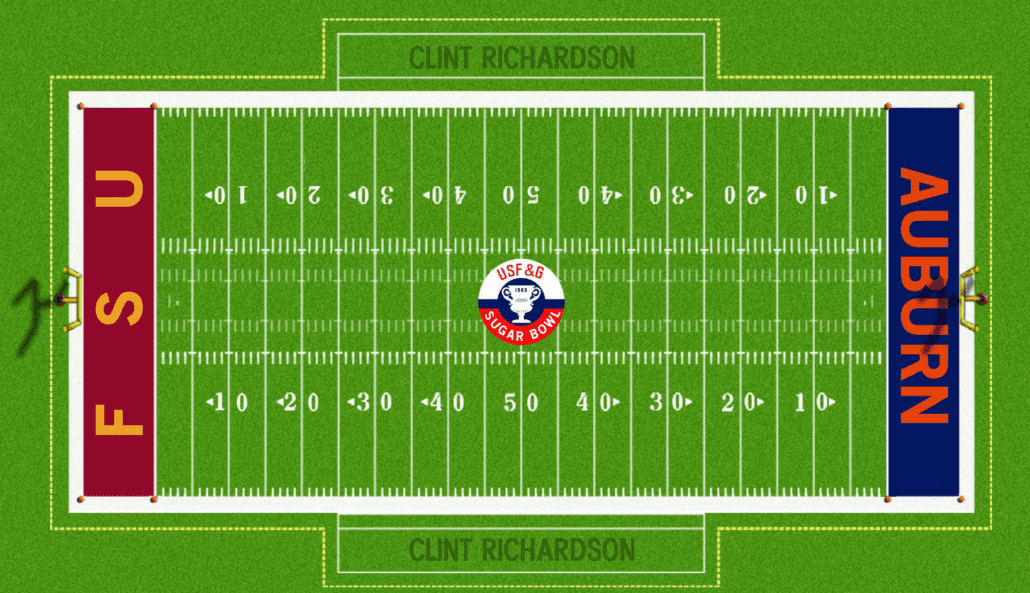
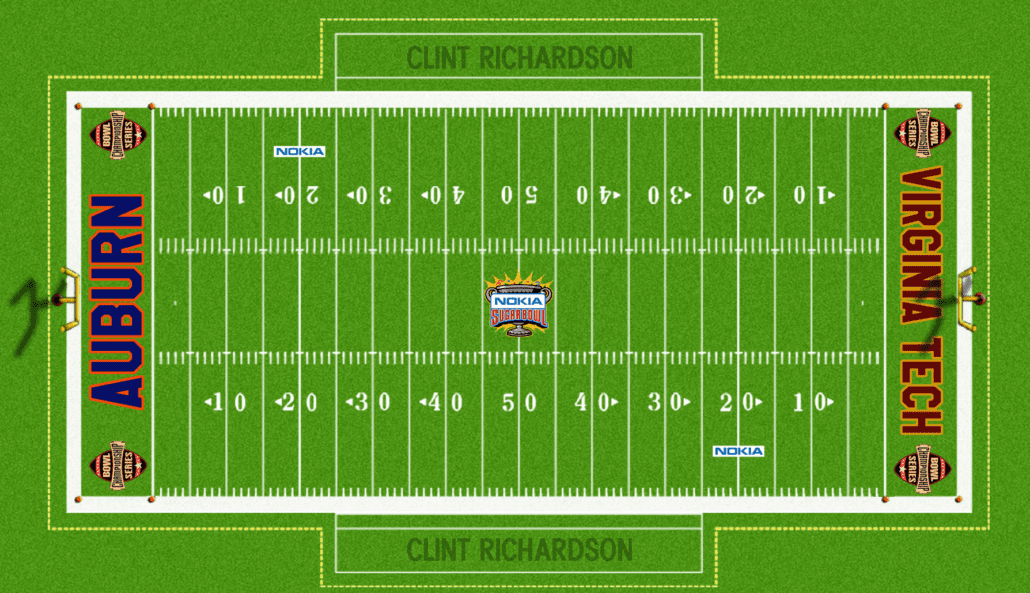


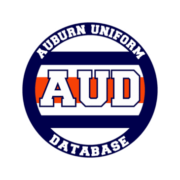

Hi Clint, you mention the 1954 Orange Bowl above. Auburn didn't play in the 54 OB.
Whoops, meant Gator Bowl. Fixed it. Thanks.
Hey Clint, great article. I hadn't realized that all of Auburn's appearances in the Sugar Bowl have been in the blue jerseys.
You mentioned Auburn fans begin angered at the BCS snub in 2004; we were equally angered after the Sugar Bowl in 1984. Consider the following: going into January 2 (all the New Year's Day bowls were played on January 2 in 1984 since New Year's Day fell on Sunday), Auburn was ranked #3 in the country, had played BY FAR the toughest schedule in the country, and their only loss was to #2 Texas. Nebraska entered the day having been ranked #1 most of the season, and were considered unbeatable by many. They were set to play Howard Schnellenberger's #5 Miami Hurricanes in the Orange Bowl. Miami entered that game at 10-1, their one loss coming against in-state rival Florida (a team Auburn beat). Early in the day, Texas lost to #7 Georgia. So as Auburn kicked off against Michigan, many Auburn fans felt that a Sugar Bowl win, coupled with a Nebraska loss, would elevate the Tigers to #1. That, of course, didn't happen. When the final polls were released on the morning of January 3, Auburn remained at #3, Nebraska fell to #2, and Miami leap-frogged both to "capture" the MNC. Auburn was voted #1 by the New York Times and a few other selectors, but they have never claimed the title. The Tigers were given a chance at "redemption" when they opened the season against the Hurricanes (now coached by Jimmy Johnson) in the Kickoff Classic at the Meadowlands. That team, however, was absent many of the stars of the 1983 team (Randy Campbell, Lionel James, Gregg Carr, etc.).